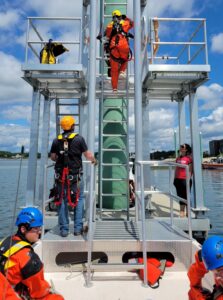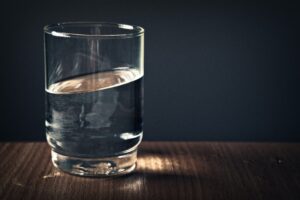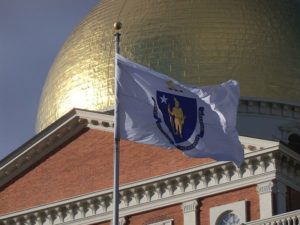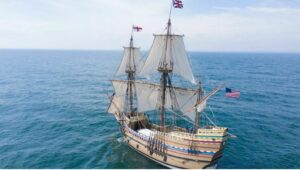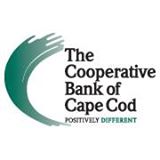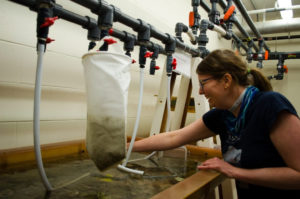
Maryna Lesoway of University of Illinois, one of this year’s Whitman Center Early Career Fellows, in a tank room at the MBL in 2017. Credit: Jennifer Tsang
WOODS HOLE – The Marine Biological Laboratory in Woods Hole has named 28 scientists from around the world as 2018 Whitman Center Fellows.
The fellowships enable scientists to conduct independent research at MBL and take advantage of its resources and scientific community.
Fellows will be supported for up to 10 weeks to pursue research within the MBL’s strategic vision.
MBL provides access to state-of-the-art instrumentation, innovative imaging technology, genome sequencing, model marine and freshwater organisms and modern laboratory facilities.
“We look forward to the arrival of these outstanding investigators over the coming months and to their integration into the MBL’s unique environment of collaborative and risk-taking research,” said David Mark Welch, Director of the MBL Division of Research.
A list of 2018 fellows can be found below.
Whitman Center Early Career Fellows
Lillian Fritz-Laylin, University of Massachusetts, Amherst
Aquatic chytrid fungi and the evolution of cell motility
Liam Holt, New York University School of Medicine
Evolutionary biophysics of the cytosol
Lynn Kee, Stetson University
Shaping the iridescent green structural color of marine bacteria Tenacibaculum discolor
Maryna Lesoway, University of Illinois, Urbana-Champaign
Understanding sex change in marine snails: leveraging ecotoxicology to identify developmental mechanisms
Andrea Pauli, Institute of Molecular Pathology (Austria)
Analysis of sperm-egg interaction and fusion by imaging and evolutionary profiling
Janet Sheung, Vassar College
State space reconstruction of Stentor coeruleus anatomy and regeneration
Victoria Sleight, University of Cambridge (UK)
Molluscan biomineralisation: development, repair and evolution
Shigeki Watanabe, Johns Hopkins University
Role of synaptic ribbons in graded neurotransmission
Whitman Center Fellows
Kambiz Alavian, Imperial College London
Regulation of synaptic transmission by Bcl-xL and Kv3.3
Tobias Baskin, University of Massachusetts, Amherst
Cellulose organization and growth anisotropy: live-cell imaging with polarized-light microscopy in 3D
Titus Brown, University of California, Davis
Improving transcriptome resources for novel marine models
Lionel Christiaen, New York University
Transmission of somatic knock-in by germline regeneration in the tunicate Ciona
Karen Crawford, St. Mary’s College of Maryland
Generating transgenic knock-out squid embryos
Scott Dawson, University of California, Davis
Mechanisms and evolutionary implications of branched microtubule networks in Rhizarian amoeba
Patrick Emery, University of Massachusetts Medical School
Establishing Parhyale hawaiensis as model for the study of circatidal clocks
Ben Evans, McMaster University (Canada)
How do important things evolve? Using genome editing to study rapid evolution of sex determination
John David Furlow, University of California, Davis
Investigating nuclear receptor function in vivo with advanced genome editing
Edgar Gomes, Instituto de Medicina Molecular, Lisboa (Portugal)
A role for cell anisotropy on nucleus-cytoskeleton connections
José Luis Gómez-Skarmeta, Centro Andaluz de Biologia del Desarrollo (Spain)
Generation of epigenomic data to unravel the regulatory principles governing the evolution of the unique morphology of skate fins
Paloma Gonzalez-Bellido, University of Cambridge (UK)
Unravelling the principles for visuo-motor transformations within the cephalopod brain
Pierre Gönczy, Swiss Federal Institute of Technology Lausanne (EPFL)
Probing conservation and diversity of centriole elimination mechanisms in starfish oocytes
Jeffrey Gross, University of Pittsburgh School of Medicine
Elucidating the molecular and cellular underpinnings of retinal pigment epithelium regeneration using zebrafish
G.W. Gant Luxton, University of Minnesota
Non-conventional nuclear-cytoplasmic transport and DYT1 dystonia
Paul Maddox, University of North Carolina, Chapel Hill
LITE imaging for high-resolution analysis of subcellular processes
Tetsuya Nakamura, Rutgers University
Revealing the genetic mechanisms underlying diversities of dermal and endochondral bones in vertebrate evolution
Christopher Sansam, Oklahoma Medical Research Foundation
The embryonic DNA replication program
Denisa Wagner, Boston Children’s Hospital
Role and localization of peptidylarginine deiminase 4 (PAD4) during neutrophil extracellular trap (NET) formation
Rafael Yuste, Columbia University
The HydraLab: Experimental and computational methods for neural circuit analysis





